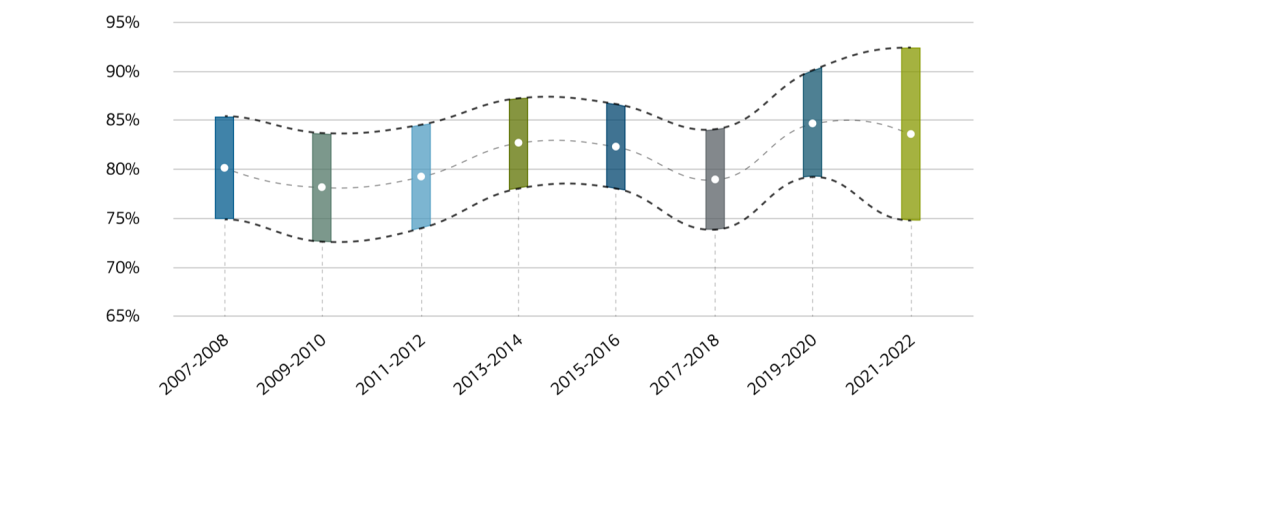Tip: Activate javascript to be able to use all functions of our website
Until 2006, all completed projects were evaluated ex-post (full survey). Since 2007, FC Evaluation has drawn an annual random sample, stratified by sector, from the population of projects ready for evaluation. Ex-post evaluations are carried out for all projects in the sample. This procedure ensures the statistical representativeness and informative value of the evaluations for the FC portfolio and maintains independence in the selection of projects to be evaluated. With over 100 projects ready for evaluation each year and a sample size of over 50 %, the effectiveness of all projects can be reliably estimated. The results are summarised and published in biennial evaluation reports.

How many projects have been evaluated in the past two years? How successful were they? What is the project volume involved?
And which projects were evaluated?
The success rates of the past two-year periods since the introduction of the sampling procedure in 2007/2008 do not differ from each other in a statistically significant way. Despite fluctuations in the average success rate in the range between 77% and 87%, the confidence intervals of the success rates overlap in the range around 81% - it is therefore obvious that the underlying success rate of all FC projects lies in this overlap range.
Estimated success rate and 95% confidence interval
